This week, Star Trek: Discovery boldly goes for one final adventure. After years of waiting—and knowing that this fifth season would be its last—the Trek show that launched the franchise’s current renaissance will begin its victory lap. But before that, it has been a while since Discovery was last on our screens—so here’s everything important to remember.
The 32nd Century Is Here to Stay
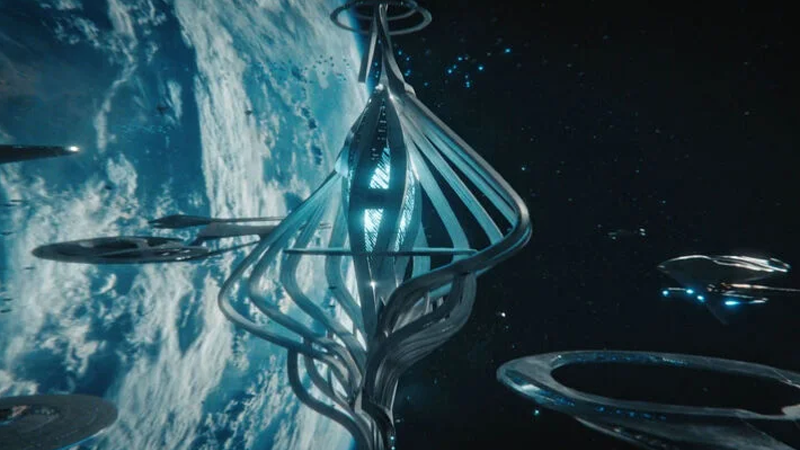
This one depends on how long you’ve been away from Discovery, really, but I’m sure there’s someone out there intrigued by the final season of a Star Trek show who’s maybe either not watched since the early days or wants to jump in on the last leg. So, if that’s you… well, go watch the rest of the show first. It has its moments.
But if you insist: Discovery has not been the pre-original-Trek show it started out as for a long while now. At the end of season two, the crew and the Discovery itself were flung far, far into the future in order to close the loop on a potential galaxy-ending threat that meant they could never return to their original timeline in the 23rd century. Ever since, they have been at the furthest point a Star Trek show has ever consistently gone to, even beyond the far future glimpsed in Enterprise’s Temporal Cold War storyline: the 32nd century.
Things are, to be clear, not 100% great at this moment in time, state of the galaxy-wise. Before Discovery showed up, the Federation’s myriad member worlds and Starfleet had been completely torn apart by a cataclysmic event called “The Burn,” the simultaneous detonation of dilithium across known space which rendered warp travel—and thus the existence of interstellar society as it had existed for over a thousand years—extremely difficult.
Discovery helped solve that problem, slowly but surely allowing Starfleet to rebuild, but not before it faced another cataclysmic threat called the Dark Matter Anomaly, or DMA, a not-so-random “random” gravitational event that kept showing up and destroying entire worlds in storms of debris and chaos. Turns out the DMA was actually the product of an extra-galactic race known only as the Ten-C, which, once again, Discovery helped solve the problem with after successfully making First Contact with the beings. Hopefully things calm down a bit in terms of existence-threatening cataclysms in season five!
The Vulcans and Humans Just Nearly Lost Their Homes
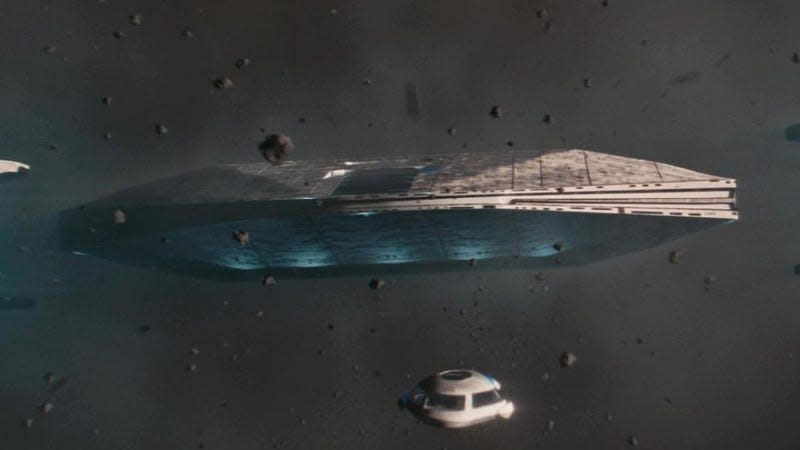

Speaking of that, Discovery’s fourth season climaxed with both Earth and Ni’Var—the rechristened homeworld of the Vulcans and Romulans, who have been re-united as sibling peoples by the 32nd century—under the direct threat of the DMA, necessitating the almost total-evacuation of the worlds as they faced destruction from showers of debris. Thanks to Captain Burnham and the Discovery crew’s intervention, the DMA was stopped just before all this happened—and most of the populations of Earth and Ni’Var, but not all of them, had been evacuated by Starfleet.
We don’t know quite how much time has passed between the events of season four and five (it’s been over two years in reality, hence why you’re reading this catchup post), but don’t be surprised if at least some of this doesn’t get mentioned in early episodes as the universe and our heroes continue to deal with the ramifications. One of which being…
Earth Is Joining the Federation (Again)
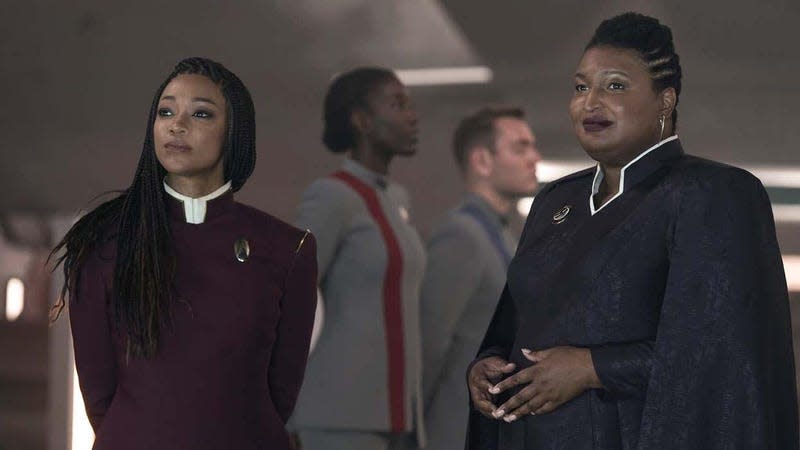

One of the final scenes of Discovery’s fourth season saw Captain Burnham and various Federation dignitaries play host to the arrival of the President of United Earth—as the world seeks to rejoin the Federation, as a show of thanks for Starfleet’s aid during the DMA crisis. It turns out that after the events of the Burn in the time between Discovery season two and three, Earth was one of the first member worlds to secede from the Federation, transforming itself into an isolationist, inward-looking, paranoid militaristic society that remained increasingly skeptical of the Federation’s capacity to survive over the course of seasons three and four. At least, until it got to see first-hand what unity and co-operation could still do in this changed and put-upon galaxy.
Also, this probably won’t come up in season five, but we should note that the President of United Earth who engages in this process to rejoin the Federation is played by famous Georgia Democrat (and avowed Trekkie) Stacey Abrams. Please do not try to think about squaring that with everything I just said about United Earth’s political attitudes, because Discovery sure as hell didn’t.
Michael and Book Are Parting… But Not for Long
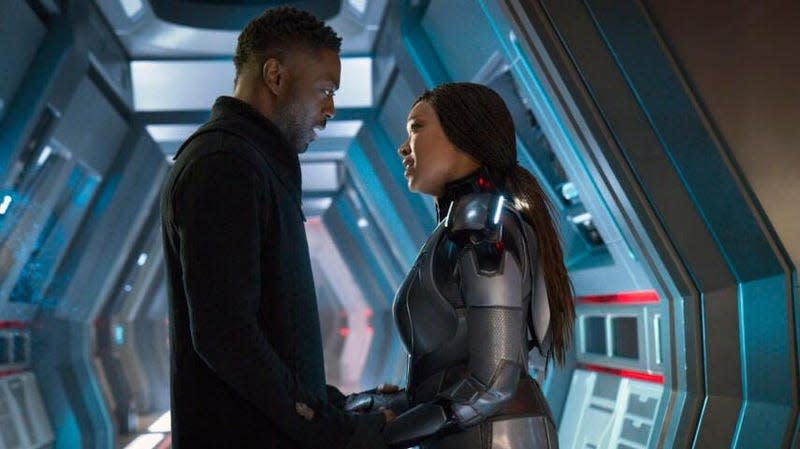

One of the more emotional fallouts of season four’s plot with the DMA was the anomaly’s destruction of the planet Kwejian—the homeworld of Cleveland “Book” Booker, played by David Ajala, the smuggler turned paramour of Captain Burnham over the course of Discovery’s third and fourth seasons. The loss of his home drove Book to surreptitiously betray Burnham and Starfleet to work with the rogue scientist Ruon Tarka, as they worked on a way to completely dissipate the DMA even after its true nature and extragalactic origins were discovered.
Booker saw the light by the end of the season, and nearly died in the process alongside Tarka, but after being saved by the Ten-C he turned himself over to the Federation to pay for siding with Tarka—pulling from Burnham’s side and from the home he’d made with her on Discovery, and assigned to community service, aiding Federation relief efforts on Europa for families impacted by the DMA’s fallout.
Good for You, Saru
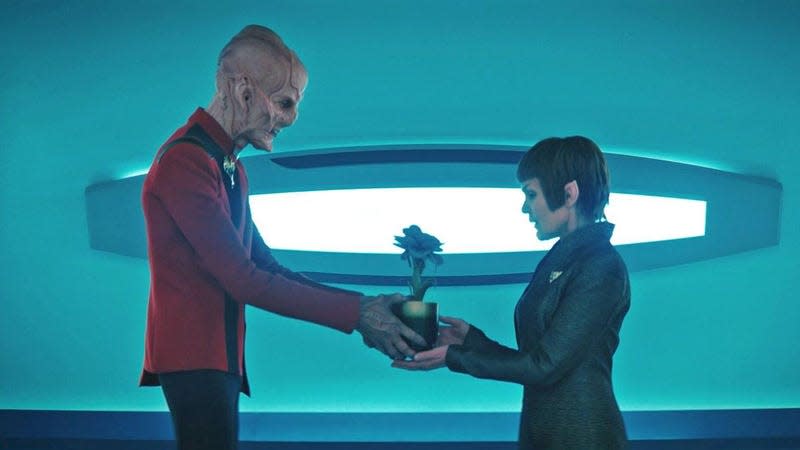

Speaking of romantic dalliances, season four played up a lingering connection between Michael’s trusted friend and first officer, Saru, and Ambassador T’Rina, Ni’Var’s representative to the Federation—and after much invites to tea and will-they-won’t-they, finally made their feelings for each other clear in the finale of season four. Presumably that means we’ll get to see a lot more of the pair together in the final season—and the interesting romantic struggles of what happens when a senior officer on a starship and a Federation ambassador start courting. Hopefully there’s a happy ending for our put-upon Kelpian hero.
One of Discovery’s Most Unique Technologies Is No More
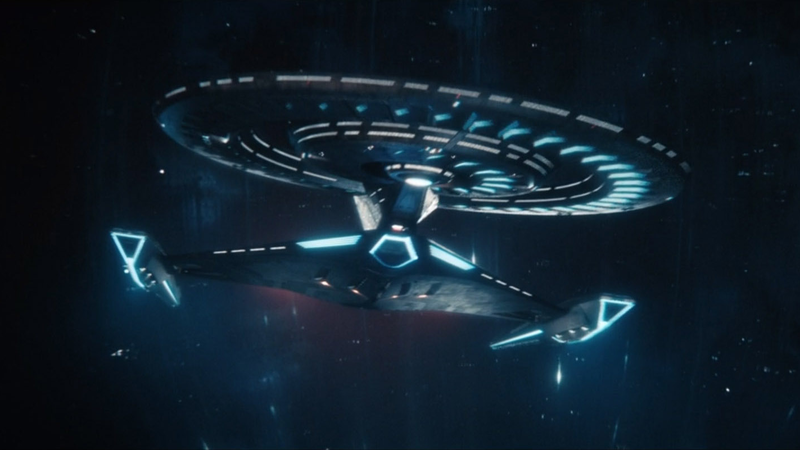

One of the major technological aspects of Discovery introduced from the very beginning was its use of a “Spore Drive”—an unprecedented method of FTL travel that allowed the ship to avoid typical warp travel and issues and instead navigate its way along a mycelial network across subspace, allowing everything from long range travel to precise realspace jumping across. The Spore Drive made Discovery unique as a ship, both in its original time when the technology was first being secretly developed and even far into the 32nd century—especially after the events of the Burn made regular long-distance FTL through warp drives impossible at scale.
But during the events of season four’s finale, both the known Spore Drives in existence—the Discovery’s and the one implemented into Book’s ship—were sacrificed in the attempt to stop Dr. Tarka’s plans to destroy the DMA. Discovery still has traditional warp drives as a back up for the Spore Drive, but still, the loss of what became a key defining part of Discovery’s worldbuilding will no doubt come up in season five.
Tilly’s Back
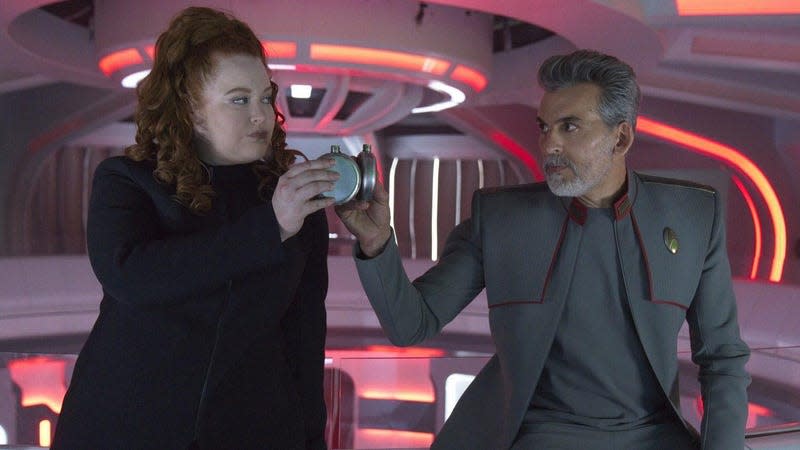

The beloved former cadet (now Lieutenant JG, by the time of season four) Sylvia Tilly shocked Discovery fans when she seemingly left the show early into the last season, when she took an offered teaching position at the re-building Starfleet Academy. While Tilly was absent for much of season four, she did return for the finale, helping Starfleet command in the evacuation of Earth, and celebrated with her former crewmates. Just how and why remains to be seen, but we do known from Tilly actress Mary Wiseman that she does indeed return to the Discovery during season five, but whatever happens, it may not be the last of Tilly we see, even as the show ends, because…
The Journey Never Ends
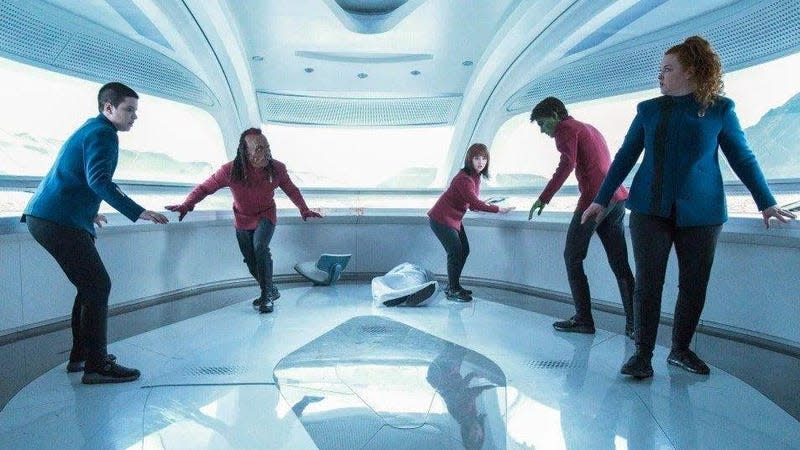

Star Trek’s future is wide open right now, as the franchise navigates the ends of Discovery and Picard and looks to a future that balances together streaming shows, made-for-streaming movies like Section 31 and a potential Picard continuation, and multiple attempts to bring Trek back to theatrical superstardom. But one key part of that is crucial to Discovery: its exploration of the 32nd century won’t end when it does.
The one brand-new show we know is definitely still part of Trek’s future at the moment is Starfleet Academy, set to begin filming this year, and will follow the prestigious institute during the 32nd century time period, rather than going back to the Trek eras established in other shows. That’s all we know at this point—we don’t know if Mary Wiseman could potentially be a key star for the series, or anyone else affiliated with Discovery, or even which students will be the focus of the series. But it does mean that even as Discovery bids farewell, the world it has established will keep boldly going beyond it.
Star Trek: Discovery season five premieres April 4 on Paramount+.
For the latest news, Facebook, Twitter and Instagram.

